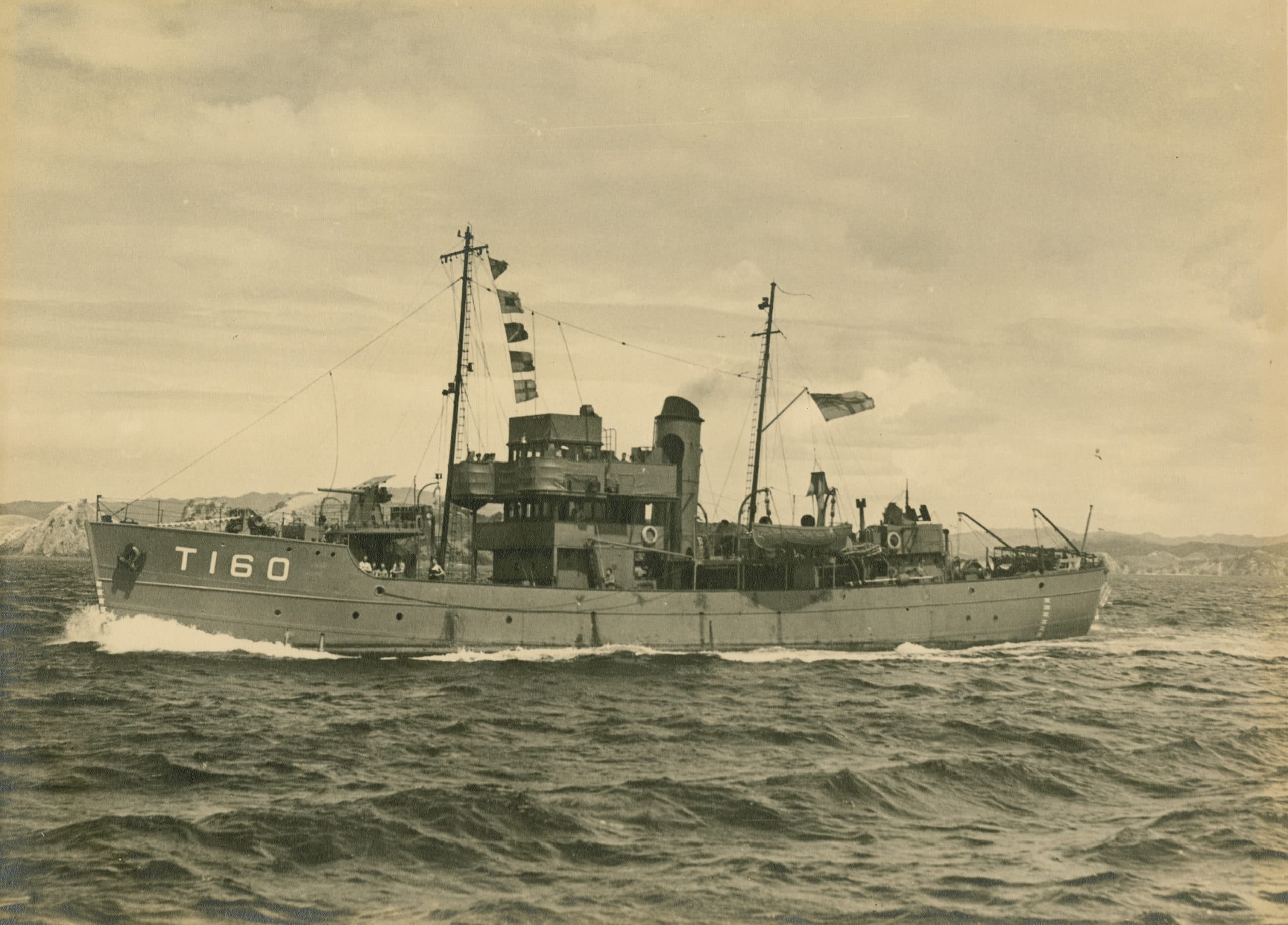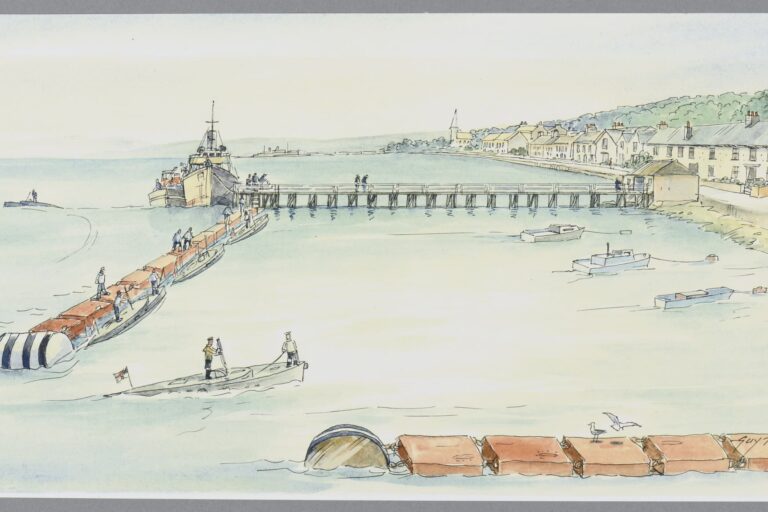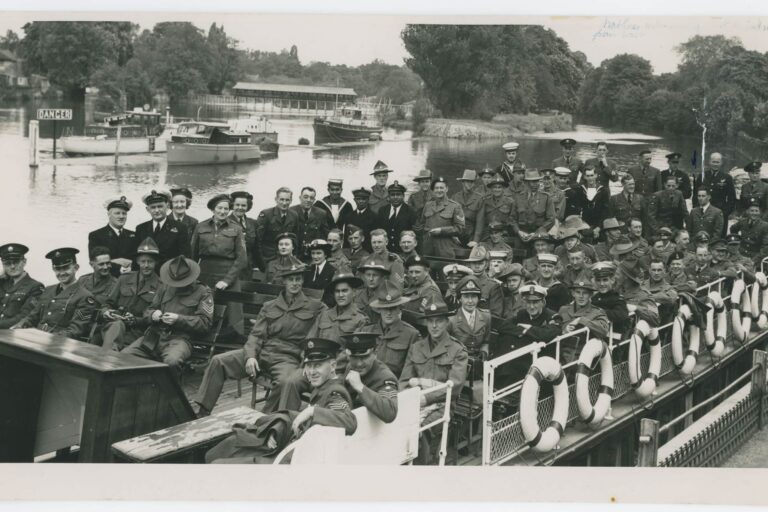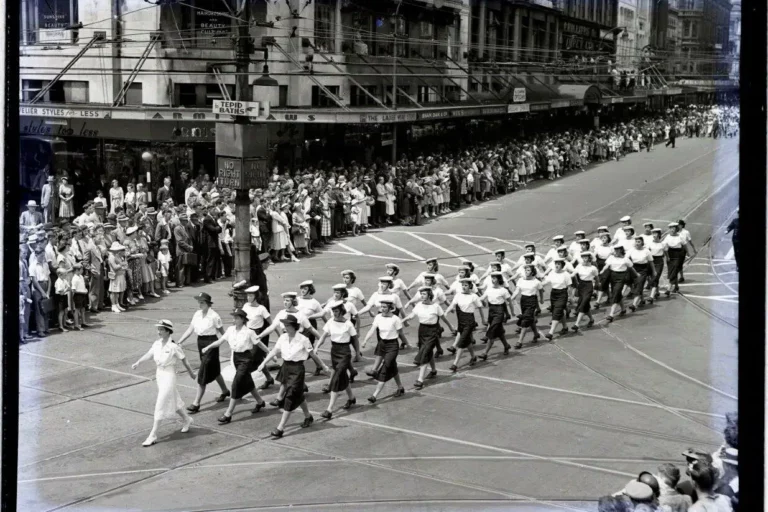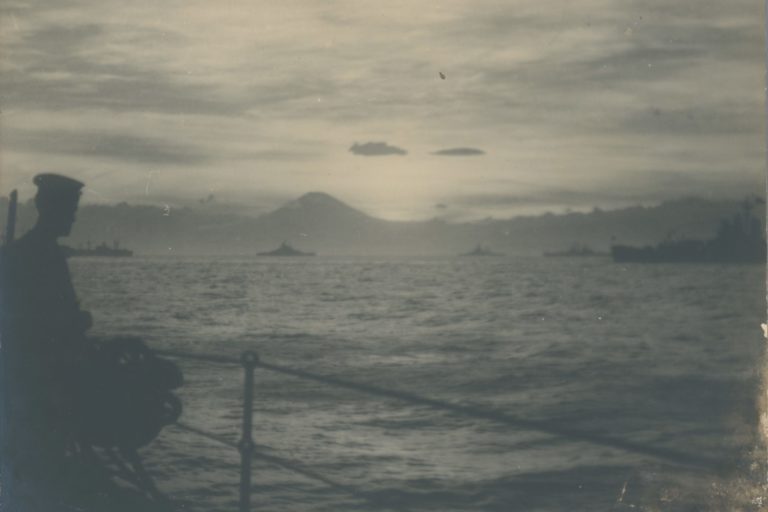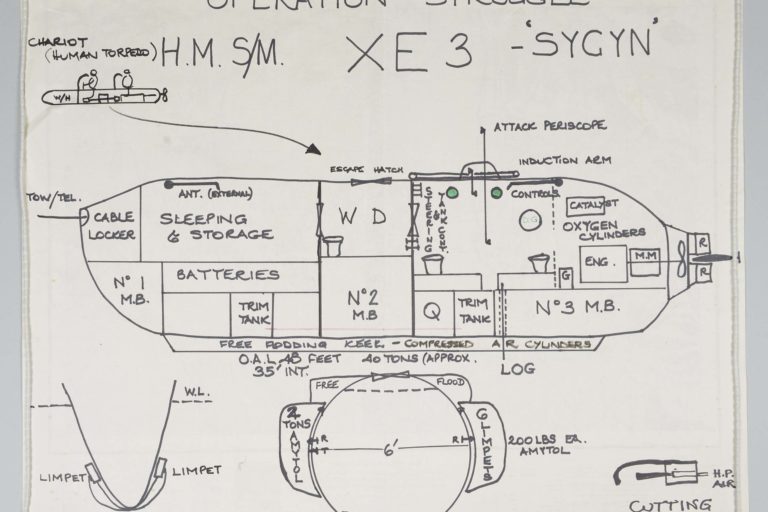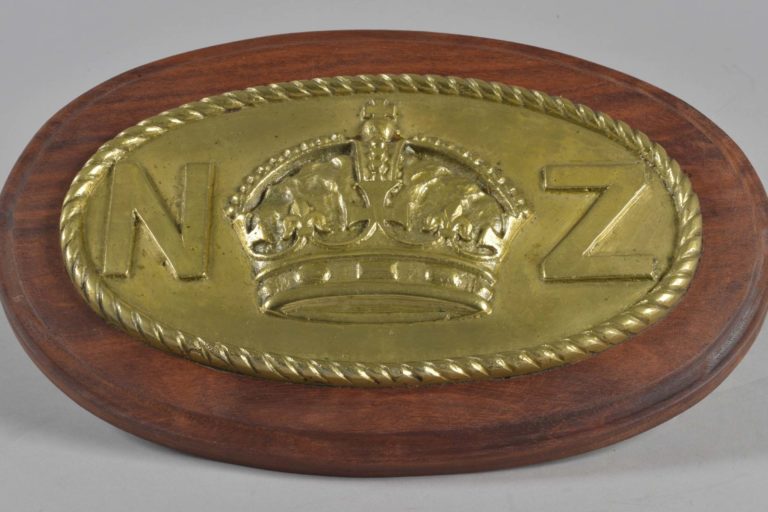The ship was named after an island near the Mull of Kintyre. Sanda was commissioned into service with the RNZN on 30 October 1941. On 31 December 1943, Sanda along with her sister ships were deployed to sweep the independent minefield in the Bay of Islands. By the end of February 1944, 249 mines had been swept and destroyed from the field of 258 mines laid in October 1942.
Ship Details:[1]
Class: Isles-class minesweeper/Anti-submarine trawlers
Pennant No.: T160
Displacement: 770 tonnes
Dimensions: 50 x 45.7 x 8.4 x 4.1m
Machinery: 1 x shaft coal-fired engine ihp 850 = 8.5-10knots
Armament: 1 x 12pdr gun, 3 x 20mm guns single mounts, 2 x machine guns, ASDIC, 30 x depth charges
Complement: 40
Commissioned into RNZN Service: 30 October 1941
Decommissioned: 15 February 1946
Ship’s Badge: There were no ship’s badges issued for these ships by the RNZN.[2]
Class History:
The Isles-class vessels were a sub-group of Admiralty-designed Anti-Submarine and Minesweeping trawlers that also included the Tree, Dance and Shakespeare classes. The first of this class, HMS Basset was launched in 1935. The Bird-class trawlers that the RNZN used in the Second World War also were developed from this class. The New Zealand government was offered four of these vessels in April 1941 which was accepted in July.[3] The New Zealand government paid £65,000 each for the four ships.[4]
HMNZS Sanda
The ship was named after an island near the Mull of Kintyre. She was built by Goole Shipbuilding and laid down on 23 December 1940, launched on 28 July 1941 and completed on 4 November 1941. Sanda was commissioned into service with the RNZN on 30 October 1941. Her first commanding officer was Lieutenant-Commander N.L. Mackie RNR, who had commanded HMNZS Rata in 1941. He would remain in command of Sanda until 1944.[5]
The four ships carried out their workups in the seas off Scotland and carried out escort work along the coastal routes into early 1942. On 15 March 1942 Sanda left Greenock with her sister ships HMNZS Inchkeith, Killegray, Scarba. They were accompanied by HMNZS Tui. The next day they joined a convoy (ONS76) sailing west to Canada as escorts. After leaving the Convoy as it approached St Johns Newfoundland, the flotilla arrived at Bermuda on 8 April 1942.[6] After spending twelve days in port, the flotilla then voyaged on to Kingston Jamaica where they remained in port for four days. It then took a week to transit through the Panama Canal Zone. On 26 May 1942 the flotilla arrived at the port of San Pedro in California.[7]
They joined a fleet of ten United States Navy tankers as anti-submarine escorts and proceeded to Pearl Harbour arriving there on 22 June 1942.[8] The flotilla then left Pearl Harbour on 6 July 1942 for Palmyra Island where the US transport ship Majaba was waiting for an escort to Fanning Island and then Suva. The flotilla arrived at Suva on 24 July 1942.[9] During the voyage from Suva to Auckland Sanda ran short of coal about 480km from Auckland. Without fuel HMNZS Inchkeith took Sanda in tow. As the flotilla approached Auckland, HMNZS Muritai took over towing duties from Inchkeith. Sanda arrived at Devonport Naval Base on 4 August 1942.[10] After refuelling, Sanda and Scarba were sent to Lyttelton for post-voyage refits. [11]
After all the ships were back in Auckland, they were formed into the 7th Trawler Group. The task for the group was to conduct minesweeping and anti-submarine patrols around the Hauraki Gulf and Bay of Islands. In October 1942 Sanda and Inchkeith gave antisubmarine protection to the freighter Waipori as she unloaded equipment for the military installations on Norfolk Island. Between October 1942 and April 1943 the ships of 7th Trawler Group were regularly deployed on anti-submarine escort and patrols when freighters were sent to Norfolk Island.[12]
On 31 December 1943, Sanda along with her sister ships were deployed to sweep the independent minefield in the Bay of Islands. By the end of February 1944, 249 mines had been swept and destroyed from the field of 258 mines laid in October 1942. The missing mines were assumed to have been carried away out to sea.[13]
In June 1944 a freighter Kotor was beached at North Cape during a storm. Sanda and Killegray were sent up to assist in refloating the ship. After four days the freighter was refloated and escorted back to Auckland by Sanda, Killegray and the Auckland Tug William C. Daldy. A salvage claim was put in for the various ships that had assisted in the rescue effort which was not settled until August 1945 when the sum of £8,000 was paid.[14] On 21 January 1945, Sanda undertook a fourteen hour tow of Inchkeith from Whangaparapara Harbour on Great Barrier Island back to the Devonport Naval Base.[15]
From March 1945 the 7th Trawler Group undertook Operation NA. This operation was to sweep German lines laid in the approaches to the Hauraki Gulf by the German raider Orion in June 1940. Despite the time lag between when the mines were laid and when the operation was conducted it was felt that it was better to be safe than lose a vessel to a mine. By 21 May when the operation was suspended no mines were located.[16] In July 1945 the Royal Navy provided a detailed summary of the mines that had been laid by the Orion from captured documents. The operation was restarted and continued until October 1945. However no mines were swept.[17] Further minesweeping duties had to be carried out by other vessels as a shortage of coal in late 1945 meant that Sanda and her sister ships were laid-up at Auckland. All four of the Isles-class trawlers were paid-off into Reserve in February 1946.[18] By 1957 they were declared surplus and sold off. In 1959, the hull of Sanda was taken near to Waikarui Bay, Takatu, north of Kawau Island for use as a shingle bin. In 1970 the hull was brought back to Auckland for scrapping.[19]
[1] R.J. McDougall, New Zealand Naval Vessels, Christchurch: GP Books, 1989, p. 61.
[2] P.Y. Dennerly, P.Y., Ships Badges of the Royal New Zealand Navy, Auckland: Royal New Zealand Navy Museum, 1997.
[3] R.J. McDougall, New Zealand Naval Vessels, Christchurch: GP Books, 1989, p. 61. See also S.D. Waters, The Royal New Zealand Navy: Official History of New Zealand in the Second World War 1939-45, Wellington: War History Branch Department of Internal Affairs, 1956, p. 200.
[4] S.D. Waters, The Royal New Zealand Navy: Official History of New Zealand in the Second World War 1939-45, Wellington: War History Branch Department of Internal Affairs, 1956, p. 203.
[5] ibid.
[6] ibid., p. 204.
[7] R.J. McDougall, New Zealand Naval Vessels, Christchurch: GP Books, 1989, p. 61. See also S.D. Waters, The Royal New Zealand Navy: Official History of New Zealand in the Second World War 1939-45, Wellington: War History Branch Department of Internal Affairs, 1956, p. 204.
[8] S.D. Waters, The Royal New Zealand Navy: Official History of New Zealand in the Second World War 1939-45, Wellington: War History Branch Department of Internal Affairs, 1956, p. 204.
[9] ibid.
[10] ibid.
[11] R.J. McDougall, New Zealand Naval Vessels, Christchurch: GP Books, 1989, p. 61.
[12] S.D. Waters, The Royal New Zealand Navy: Official History of New Zealand in the Second World War 1939-45, Wellington: War History Branch Department of Internal Affairs, 1956, p. 267.
[13] ibid., p. 273.
[14] R.J. McDougall, New Zealand Naval Vessels, Christchurch: GP Books, 1989, p. 62.
[15] ibid.
[16] S.D. Waters, The Royal New Zealand Navy: Official History of New Zealand in the Second World War 1939-45, Wellington: War History Branch Department of Internal Affairs, 1956, pp. 275-276.
[17] ibid., p. 276.
[18] R.J. McDougall, New Zealand Naval Vessels, Christchurch: GP Books, 1989, p. 62.
[19] ibid.

